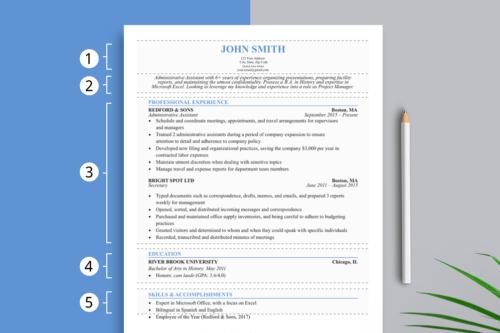
Resume
Resume is a summary of your career, whether yours is just getting started or has been going on for years. Coming in at around one page in length, it showcases the jobs you have held and currently hold, the responsibilities you’ve taken on, the skills you’ve developed, and the qualities you bring to the table as an employee.
For all the work you may put into writing one, hiring managers actually spend very short time mere seconds in many cases looking at your resume. But despite this sad fact, it’s safe to say that creating a great resume (rather than hastily throwing one together) still matters.
How Do You Write a Resume?
1. before you write a resume, understand how to prepare a resume.
There are a couple of things you need to do before you start writing a resume. Remember: Each resume you write should be tailored to the job you are applying for, it isn’t a one-size-fits-all document. Here are some tips that will make resume writing in simple
To write a professional resume, you need to be prepared. First, make a list of:
2. Understand the key sections of a resume.
Firstly understand the key sections for every resume. They each serve a different purpose and based on your experience, might be placed in different areas of your document. They are Contact information such as your name, Date of birth, professional email address, phone number, and the city where you live.
3. Resume summary or resume objective?
A resume summary, also known as a summary statement or professional summary, is a two-to-three-sentence summary of your career and past achievements. It’s ideal for candidates with relevant work experience. To write a good resume summary, feature your top skills and qualifications, use keywords and phrases found in the job description, and avoid using personal pronouns (I, me or my).
4. Capture your work experience.
Organizing and writing about your work experience may sound like a daunting task, but just follow these pointers, and you’ll learn how to make a resume work history section in no time.
How to list work experience in a resume
Your work experience should be written in reverse-chronological order that meaning your current or most recent job is at the top of the list. Such as:
5. Highlight your top skills
The summary statement and work history, your job skills section should be tailored to the job. When writing a resume, goal to include six to eight relevant hard and soft skills and in some cases, a summary of qualifications.
Difference between hard skills and soft skills
Hard skill (professional skill) is an ability acquired through practice, education and repetition that is job-specific. The ability to operate heavy machinery, knowing how to use specific software and speaking another language counts as a hard skill.
Soft skill is an intangible ability and personal trait that is not tied to a single job and generally helps you thrive in the workplace including being well-organized or a team player.
6. Write your education, certifications, licenses and honors sections.
Do not treat the education, certifications and honors sections of your resume as an afterthought. While these sections may seem easiest when learning how to write resumes, they are essential and require just as much of your attention.
Education
Write your academic credentials with the latest at the top. If you have approximate ten years of work experience, it’s unnecessary to include the year you graduated. If you lack professional experience and work in a field that places great importance on academia, your education section should highlight your trajectory and accomplishments correctly.
Here are the basics on how to write a resume education section:
7. References
You have also mention reference such as Teacher/Professor, Work supervisor (current/past). Character reference (Pastor, Headmaster, youth group leader or someone who knows you well) Include the name, relationship to you, organization, contact phone numbers.
8. Other Considerations
Limit your resume to one and maximum two pages. Don’t include birth date, health status or social security number. Be honest but avoid writing anything negative in your resume. Make your resume error free. Have someone proof read it for you. Use a simple, easy to read font style, 10 to 14 point. Use high quality paper.
Lorem ipsum viverra feugiat. Pellen tesque libero ut justo, ultrices in ligula. Semper at. Lorem ipsum dolor sit amet elit. Non quae, fugiat nihil ad. Lorem ipsum dolor sit amet. Lorem ipsum init dolor sit, amet elit. Dolor ipsum non velit, culpa! elit ut et.
Lorem ipsum dolor sit amet elit. Velit beatae rem ullam dolore nisi esse quasi, sit amet. Lorem ipsum dolor sit amet elit.